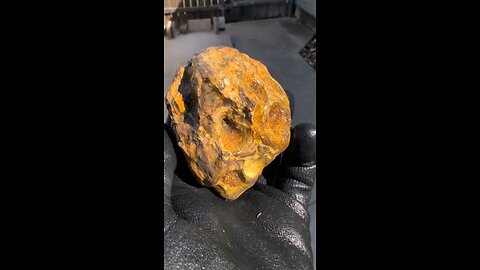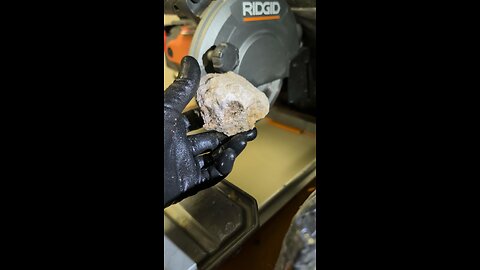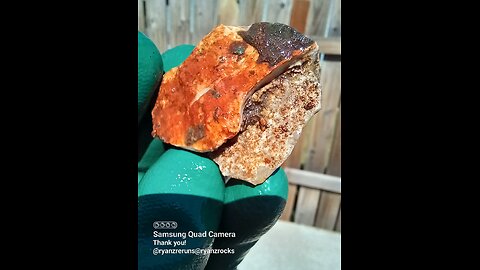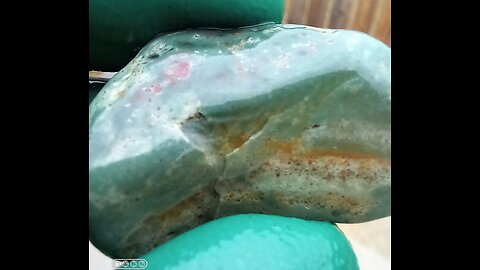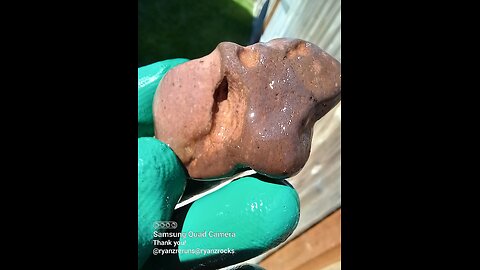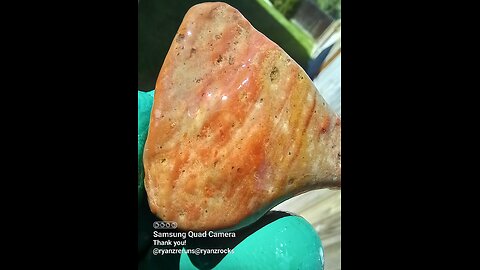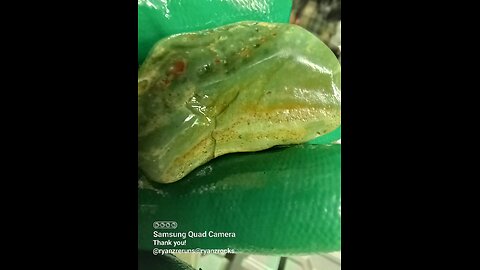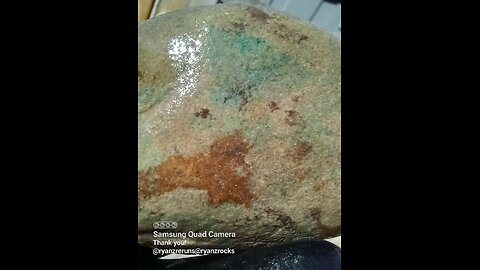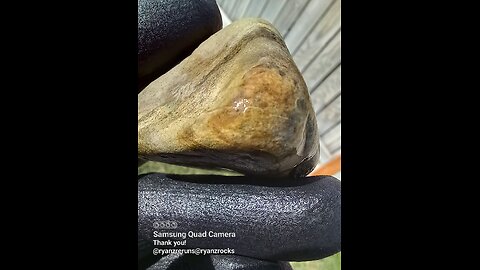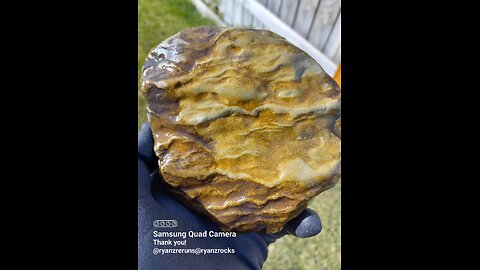Premium Only Content
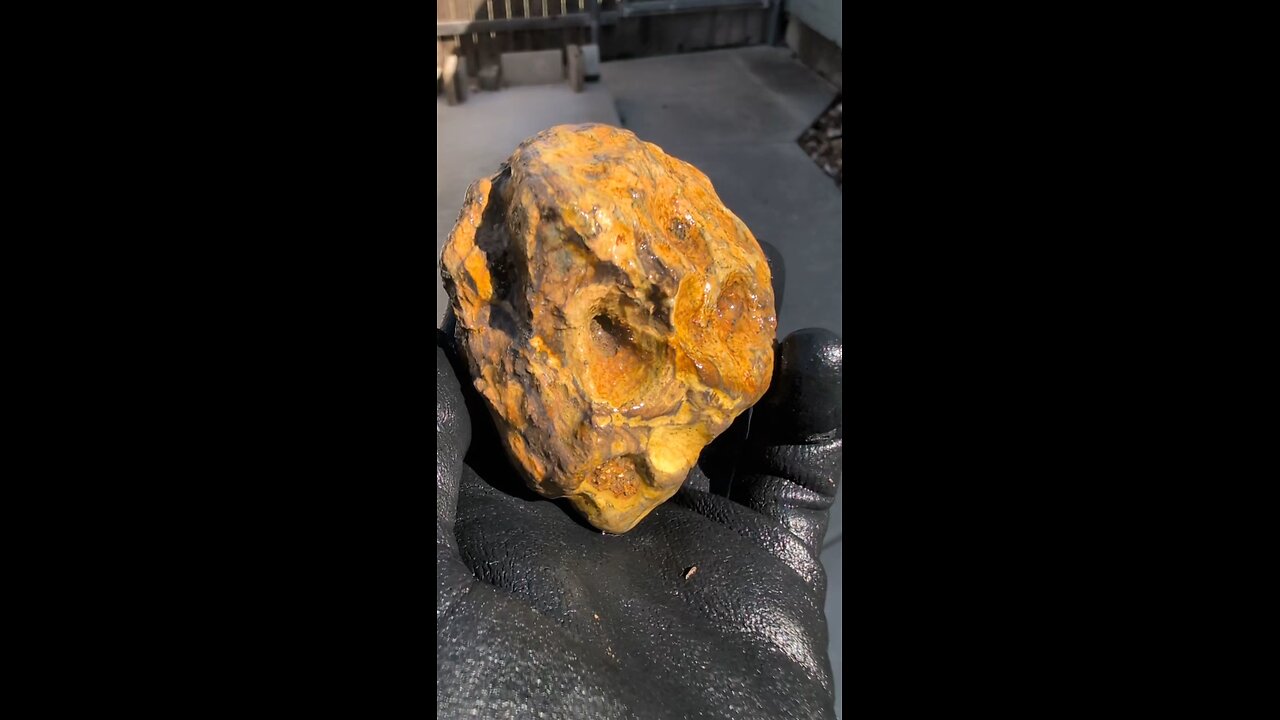
Asteroid!
Boring!
Bright Green Agate!
Cool Banding!
Interesting form!
Cool Banding!
Same as the outside!
Greens & Browns!
Green Sandstone!
Sandstone!
Asteroid!
This rock appears to be a sedimentary rock, possibly a concretion or a nodule in mudstone or sandstone, with iron staining. Here's a more detailed breakdown:
Reasons for the Identification:
* Rounded Shape: The rock has a relatively rounded, irregular shape, which is often seen in concretions and nodules.
* Textural Variation: The rock shows variations in texture, with some areas appearing smoother and others more pitted or porous. This is common in concretions where different minerals may have precipitated in the pore spaces.
* Coloration: The rock has a mix of brown, gray, and orange hues, likely due to iron oxides staining the original material.
* Possible Internal Structure: The circular or oval-shaped depressions might indicate the presence of fossils or other structures that were replaced or dissolved, leaving behind a void.
Concretion or Nodule:
* Concretion: A concretion is a hard, compact mass of sedimentary rock formed by the precipitation of minerals around a nucleus (like a fossil fragment or leaf). They often have a different composition than the surrounding rock.
* Nodule: A nodule is a general term for a lump or mass of a mineral or rock with a rounded or irregular shape, distinct from the surrounding material.
Mudstone or Sandstone Matrix:
* The overall appearance suggests that the concretion or nodule is embedded in a fine-grained sedimentary rock, possibly mudstone or sandstone, which has been weathered and stained by iron oxides.
-

Tundra Tactical
4 hours ago $0.70 earned🛑LIVE NOW!! This spits in the face of the Second Amendment.🛑
9.01K -
 LIVE
LIVE
DLDAfterDark
3 hours ago $0.01 earnedIt's SHTF! Do You Have What You Need?? Let's Review Items & Priorities
143 watching -
 28:58
28:58
Stephen Gardner
4 hours ago🚨Explosive allegations: Rosie O’Donnell connects Trump to Epstein scandal!?
11.4K42 -
 LIVE
LIVE
SavageJayGatsby
1 day agoSpicy Saturday | Let's Play: Grounded
464 watching -
 2:06:27
2:06:27
MattMorseTV
5 hours ago $0.79 earned🔴Vance just went SCORCHED EARTH.🔴
117K158 -
 46:41
46:41
The Mel K Show
10 hours agoMel K & Corey DeAngelis | The Hopelessly Captured Teacher’s Unions: Biggest Threat to Our Children & Future | 9-6-25
28.4K4 -
 2:52:42
2:52:42
Mally_Mouse
1 day ago🔥🍺Spicy HYDRATE Saturday!🍺🔥-- Let's Play: Grounded
27.4K2 -
 1:32:27
1:32:27
Patriots With Grit
6 hours ago"HELP... They're Killing Me" | Gail Seiler
9.98K1 -
 3:07:51
3:07:51
Barry Cunningham
9 hours agoPRESIDENT TRUMP ANNOUNCES THE CHIPOCALYPSE! AND I'M HERE FOR IT! (AND MORE NEWS)
135K68 -
 13:37
13:37
Exploring With Nug
12 hours ago $0.24 earnedTrying to Uncover Secrets in St Augustine’s Waters Missing Person Search!
27.5K3
